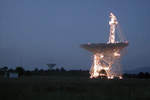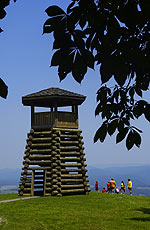
| Fishing
Pocahontas County is called the Birthplace of Rivers because eight rivers have headwaters here, so it's no surprise that fishing is extremely popular in the rivers and countless streams that flow out of our mountains! These cold and clear streams and rivers are the sites of the finest trout fishing in the state and many are on the state trout stocking program. Native brook trout, small but challenging, still thrive in several of the county's streams. Several outfitters in the county offer guided fly fishing and float trips.
| 
| Hunting
This region was a favorite hunting ground for the Indian tribes who used to roam these mountains, and it remains a favorite of hunters today because deer, black bear, ruffled grouse, and wild turkey abound here. The Monongahela National Forest lands are open to hunting during legal seasons, as are Calvin W. Price and Seneca State Forests and the Handley Public Hunting Area. Hunting is not permitted in state parks. |
| 
| National Radio Astronomy Observatory
Situated near Green Bank is the National Radio Astronomy Observatory, home of the world's largest adjustable radio telescope-the Robert C. Byrd Telescope. Regularly scheduled tours explain the importance of this facility, and finish with a bus ride that takes the visitor within 100 yards of the larger-than-life structure. Green Bank lies within the National Radio Quiet Zone, which explains why the Observatory is located here, and why you cannot pick up your favorite station on the car radio. |

| Droop Mountain Battlefield
This 285 acre park includes interpretive exhibits, Confederate earthworks, a small museum, lookout tower, picnic area, hiking trails and children's play area. The oldest state park in West Virginia. |
|